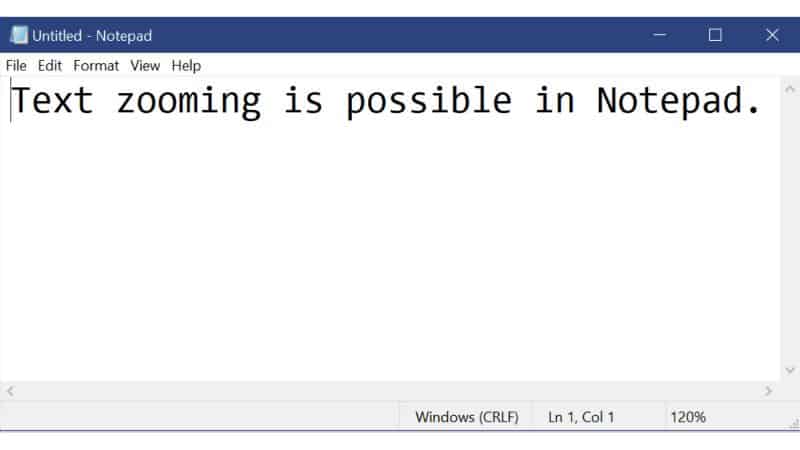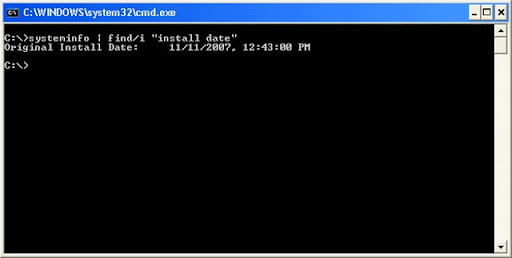
- 3D CLOCK USING NOTEPAD AND CMD HOW TO
- 3D CLOCK USING NOTEPAD AND CMD INSTALL
- 3D CLOCK USING NOTEPAD AND CMD MOD
- 3D CLOCK USING NOTEPAD AND CMD DOWNLOAD
Next you copy the BIOS that you created (in my case GTXOC.rom) also to the bootable. Now open the "nvFlash" folder and copy the "cwsdpmi" and "nvFlash" files to the bootable USB or Floppy. Keep in mind I tested this on my system, Windows7 64bit, so it's possible that you need to get your own DOS system files to put on the USB.Ģ) Copy nvflash.exe, cwsdpmi.exe and your original BIOS onto the floppy disk or USB and your backup is ready.ĭue to the fail nature of floppy disks I highly suggest making 2 emergency floppies because if you brick your card from a bad flash and your boot floppy disk is corrupt then you're up the creek without a paddle.
3D CLOCK USING NOTEPAD AND CMD DOWNLOAD
(pick the "USB image w7" file for this, also included in the download package)Īnd now it's ready.
3D CLOCK USING NOTEPAD AND CMD INSTALL
* When it finishes you will have successfully made a boot disk, click 'Ok' then 'close'įirst install "HP USB Storage Format Tool" * When the warning pops up saying all data will be erased just click 'Ok' * When the window pops up put a tick in the box "Create an MS-DOS startup disk" * Right click on the A:\ in "Computer" (or "My Computer" in XP) Preparing for a "BLIND FLASH and or normal flash". You may need it for when you've had a bad flash and can't get any video output from your card at all. What is a "BLIND FLASH" it basically means an automated flash of your original BIOS by use of an autoexecuting batch file on a bootable floppy disk.
3D CLOCK USING NOTEPAD AND CMD MOD
NOTE - you should always have a backup of your original BIOS on a floppy disk or USB so you can do an emergency "Blind Flash" if your BIOS mod fails and bricks your video card. You may need to download a particular version for your video card depending on its age, the current latest version is v5.88 (included in the download package) The tool to flash nvidia video cards is called nvflash utility and it will need to be run in DOS, from a bootable floppy, CD or USB stick. You need a bootable floppy disk or a bootable USB.

Step 4: Preparing the flash, we need nvflash for this. We want to save the OC BIOS: File-> Save BIOS.-> Save as Nvidia (.rom)-> Give it a easy name and type the. I just changed the clock speeds from Core: 700 to 710, Shader: 1400 to 1460, Memory: 1150 to1250. Now the original save BIOS is open we can change the Clock speeds, Boot clocks, Voltage, Fan. (Integrity must be green).įirst Save the original BIOS as (.rom) so you can flash it in DOS, (.bin) files cannot be used to flash in DOS.= File-> Save BIOS.-> Save as Nvidia (.rom)-> Give it a easy name and type the. Step 3: Changing the clock speeds and saving the overclocked BIOS. Open NiBiTor, with this tool we can edit the BIOS. Step 2 : Loading the BIOS, this is done with NiBiTor. The GPU clock is the clock we get after overclocking or the actual clock at the moment. You see Default Clock, well that is the clock of the bios. Save the BIOS in a folder that you want, but give it a clear and easy name.

We need to remember this when we want to open the saved BIOS with NiBiTor. Here you see the BIOS version and the possibility to save this BIOS. Step 1: Looking at the GPU info and saving your GPU BIOS, this is done with GPU-Z. Bootable floppy disk or Bootable USB ( this will be explained) MAKE SURE BEFORE YOU FLASH YOUR BIOS THAT THE NEW BIOS IS STABLE (test it with RivaTuner, Afterburner or EVGA precision and during running a 3D Application) ,AND ALWAYS MAKE A BACKUP OF YOUR ORIGINAL BIOS!!!!!!!!!! The overclocking of the GPU is not treated in this guide, this guide is for how you flash the bios of the GPU. This is for the advanced user, know that overclocking and Flashing is not without risk.!!!!!!!!!! The guide, it is also included in the download package. So other experiences are more than welcome. This guide is made with my findings and experience on my system.

If there are some of you have more info on this topic please post it.

Latest versions of NiBiTor and nvflash can you find here įlashing you bios is not without danger, make sure you always got a backup, and if you are not sure n DON'T DO IT, before you flash your self made BIOS, test the settings first with RivaTuner or MSI Afterburner and test these settings on running 3D Applications Fanspeed IC NiBiToR guide (pdf) for 8.- 2.
3D CLOCK USING NOTEPAD AND CMD HOW TO
GUIDE with images like in post 3 for how to edit your FERMI bios GUIDE with images like in this post, how to use NiBiTor and how to save bios with GPU-Z or with the flash tool in DOS. HP USB Disk Storage Format Tool ( need it to make the bootable USB) USBimage w7 ( for making a bootable USB, tested with windows7 64bit) NiBiToR.v6.01 (use the latest) 6.02 is also in package but this version gives red or yellow integrity when you open a bios, to solve this you need to do a rescan of the bios in the "ADV info" tab. FERMI BIOS EDITOR 1.55 (no further support) and for help with this tool see here. GUIDE for Flashing Bios NV + FERMI BIOS EDITING (postnr3)


 0 kommentar(er)
0 kommentar(er)
